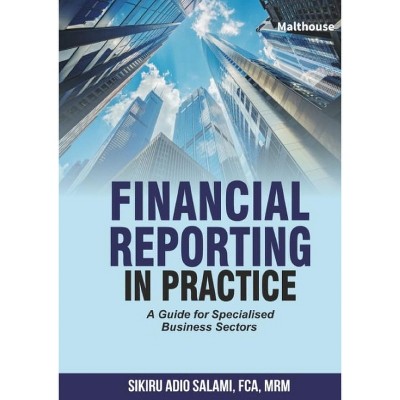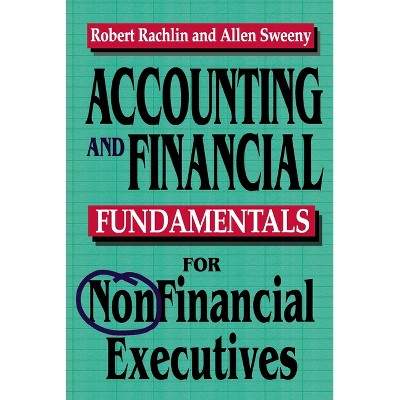Sponsored

Setting Standards for Financial Reporting - (347) by A Bowdoin Van Riper (Hardcover)
In Stock
Sponsored
About this item
Highlights
- The book begins with an overview of how and why the present self-regulatory arrangement for setting standards for financial reporting in the private sector came about in 1973.
- About the Author: ROBERT VAN RIPER is a retired senior member of the staff at the Financial Accounting Standards Board, 1973-1991.
- 216 Pages
- Business + Money Management, Accounting
- Series Name: 347
Description
About the Book
The book begins with an overview of how and why the present self-regulatory arrangement for setting standards for financial reporting in the private sector came about in 1973. A brief description of the new structure is followed by a discussion of the essential elements of meaningful self-regulation. A schism emerged between advocates of neutrality and objectivity in standard setting and those who think the primary concern should be for possible economic and social consequences. Early clashes between traditional views and newer insights are described, setting the stage for an account of serious resistance to change. Powerful interests mount determined efforts to thwart the standard setters, undercutting not only self-regulation, but also the intent of the federal securities acts of 1933 and 1934. The practical and philosophical bases for the opposing views are examined, and recommendations are presented for ensuring continuation of private-sector standard setting despite the intensity of these views.
Book Synopsis
The book begins with an overview of how and why the present self-regulatory arrangement for setting standards for financial reporting in the private sector came about in 1973. A brief description of the new structure is followed by a discussion of the essential elements of meaningful self-regulation. A schism emerged between advocates of neutrality and objectivity in standard setting and those who think the primary concern should be for possible economic and social consequences. Early clashes between traditional views and newer insights are described, setting the stage for an account of serious resistance to change. Powerful interests mount determined efforts to thwart the standard setters, undercutting not only self-regulation, but also the intent of the federal securities acts of 1933 and 1934. The practical and philosophical bases for the opposing views are examined, and recommendations are presented for ensuring continuation of private-sector standard setting despite the intensity of these views.From the Back Cover
An overview of how a new arrangement for setting financial reporting standards in the private sector came about, and why. Van Riper documents the emergence of a schism between advocates of neutrality in financial reporting standards and those who emphasize "social consequences", and the clashes between traditional views and new insights. He describes the efforts by powerful interests to block change, and examines the reasons why standard setting gives rise to contention and controversy. His recommendations to ensure standard setting in the private sector will be of special interest, not only to accounting professionals but to others throughout the finance, investment, and banking industries and to corporate management. The book begins with an overview of how and why the present self-regulatory arrangement for setting standards for financial reporting in the private sector came about in 1973. A brief description of the new structure is followed by a discussion of the essential elements of meaningful self-regulation. A schism emerged between advocates of neutrality and objectivity in standard setting and those who think the primary concern should be for possible economic and social consequences. Early clashes between traditional views and newer insights are described, setting the stage for an account of serious resistance to change. Powerful interests mount determined efforts to thwart the standard setters, undercutting not only self-regulation, but also the intent of the federal securities acts of 1933 and 1934. The practical and philosophical bases for the opposing views are examined, and recommendations are presented for ensuring continuation of private-sector standard setting despitethe intensity of these views.Review Quotes
.,."an interesting read for accountants, laying bare how things really get done at the peak of the accounting power structure."-Management Accounting
?...an interesting read for accountants, laying bare how things really get done at the peak of the accounting power structure.?-Management Accounting
?Van Riper tells the contentious history of a private sector group establishing accounting standards in the U.S. He details the legislative history of the Securities and Exchange Commission, including their decision to allow the private sector to establish accounting standards and the demise of the FASB's predecessor groups. He captures the reader's attention by documenting the conflicting philosophies of financial statement preparers and the Board. For upper-division undergraduate through professional collections.?-Choice
?Van Riper's book is well written and was scrupulously researched. The contents can be appreciated by a large audience, and the book would be provocative reading in a course that undertakes to prepare students for the rough-and tumble real world of accounting.?-The Accounting Review
..."an interesting read for accountants, laying bare how things really get done at the peak of the accounting power structure."-Management Accounting
"Van Riper's book is well written and was scrupulously researched. The contents can be appreciated by a large audience, and the book would be provocative reading in a course that undertakes to prepare students for the rough-and tumble real world of accounting."-The Accounting Review
"Van Riper tells the contentious history of a private sector group establishing accounting standards in the U.S. He details the legislative history of the Securities and Exchange Commission, including their decision to allow the private sector to establish accounting standards and the demise of the FASB's predecessor groups. He captures the reader's attention by documenting the conflicting philosophies of financial statement preparers and the Board. For upper-division undergraduate through professional collections."-Choice
About the Author
ROBERT VAN RIPER is a retired senior member of the staff at the Financial Accounting Standards Board, 1973-1991. Prior to that, he was senior vice president of N.W. Ayer, Inc. He is the author of many articles in business and professional journals and two novels.Shipping details
Return details
Frequently bought together
Trending Non-Fiction


















